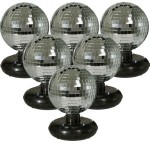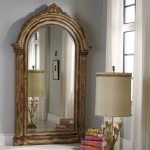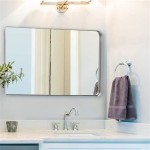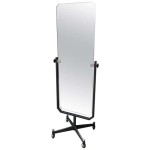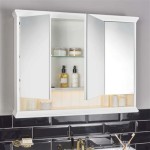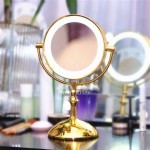How To Hang a 20kg Mirror On Plasterboard
Hanging a heavy mirror, especially one weighing 20kg, on plasterboard requires careful planning and execution to ensure both the mirror's safety and the wall's integrity. Standard picture hooks are insufficient for this weight and specialized fixings are necessary.
Key Considerations for Hanging Heavy Mirrors
Several factors contribute to a successful hanging: understanding the wall structure, choosing appropriate fixings, and using the correct tools. A thorough assessment beforehand prevents potential damage and ensures a secure installation.
Assessing the Wall Structure
Plasterboard walls vary in construction. Knowing if the wall is a single, double, or dot-and-dab construction influences the type of fixing required. Additionally, locating wall studs provides the strongest anchoring points.
Locating Wall Studs
A stud finder is the most reliable method for locating wall studs. These electronic devices detect changes in density within the wall, indicating the presence of a stud. Tapping gently along the wall and listening for a solid sound compared to a hollow one can also help, although this method is less precise. Studs are typically spaced 400mm or 600mm apart.
Choosing the Right Fixings
Several heavy-duty fixings are suitable for hanging a 20kg mirror on plasterboard:
- Heavy-Duty Plasterboard Anchors: These specialized anchors expand behind the plasterboard, distributing the weight over a larger area. They are suitable for single and double-layered plasterboard.
- Toggle Bolts: These are particularly effective for hollow walls, using spring-loaded wings that expand behind the plasterboard to provide a secure grip. They are ideal for heavier items.
- Hollow Wall Anchors with Screws: These combine a plug and a screw, providing a strong fixing for heavier items. They are suitable for single or double-layered plasterboard.
- Fixing Directly to Studs: When possible, fixing directly into wall studs offers the strongest support. Use long, sturdy screws designed for wood.
Tools Required for Installation
Gathering the necessary tools beforehand ensures a smooth installation process. These tools typically include:
- Drill with appropriate drill bit: The drill bit size depends on the chosen fixing. Consult the manufacturer's instructions for the correct size.
- Screwdriver: A screwdriver matching the screw head of the chosen fixing.
- Spirit Level: Essential for ensuring the mirror hangs straight.
- Measuring Tape: Accurate measurements are crucial for correct placement.
- Pencil: For marking the desired location and drill points.
- Stud Finder (recommended): For locating wall studs.
Step-by-Step Hanging Process
Following a systematic approach ensures a safe and secure installation:
- Locate Studs (if applicable): Use a stud finder to identify stud locations. If studs align with the desired mirror position, this offers the strongest fixing option.
- Mark the Desired Location: Measure and mark the desired position of the mirror on the wall. Use a spirit level to ensure the markings are level.
- Mark Drill Points: Based on the chosen fixings and mirror hanging hardware, mark the drill points on the wall. Double-check measurements to ensure accuracy.
- Drill Pilot Holes: If required by the chosen fixing, drill pilot holes of the correct diameter and depth. This prevents the plasterboard from cracking and ensures a secure hold.
- Insert Fixings: Carefully insert the chosen fixings into the drilled holes, following the manufacturer's instructions. Ensure they are flush with the wall surface.
- Attach Mirror Hanging Hardware (if necessary): Some mirrors require specific hanging hardware, such as D-rings or wire. Attach this hardware securely to the back of the mirror according to the manufacturer's instructions.
- Hang the Mirror: Carefully hang the mirror on the installed fixings. Check again with the spirit level to ensure it is hanging straight.
Safety Precautions
Safety is paramount when working with heavy objects and power tools. Observe these precautions:
- Wear appropriate safety glasses: Protect your eyes from dust and debris.
- Use appropriate gloves: Protect your hands from sharp edges and materials.
- Enlist assistance: Heavy mirrors are best handled with two people to prevent accidents and ensure safe lifting.
- Consider the surrounding environment: Ensure the area is clear of obstacles and potential hazards.
Choosing Appropriate Mirror Hanging Hardware
The type of hanging hardware used depends on the mirror's design and weight. Consider these options:
- D-Rings: Heavy-duty D-rings attached to the back of the mirror provide a secure hanging point. They are often combined with wire or strong cord.
- Heavy-Duty Wire: Use wire rated for the weight of the mirror. Ensure the wire is securely attached to the D-rings or other hanging points.
- French Cleats: These interlocking wooden brackets provide a robust and stable hanging system for heavier mirrors.

How To Hang A 20kg Mirror With Deep Ba Bunnings Work Community

How To Hang A Heavy Mirror

How To Hang Items On A Plasterboard Wall

How To Hang A Heavy Picture On Plasterboard Wall

How To Hang Items On A Plasterboard Wall

Gripit Review How To Hang A Heavy Picture On Plasterboard Wall 2

How To Hang A Mirror Cabinet Over Tiled Bunnings Work Community

Mirror Picture Plasterboard Fixing Kit Gripit

How To Hang A 31kg Mirror On Wall With Bunnings Work Community

Mirror Picture Plasterboard Fixing Kit Gripit

